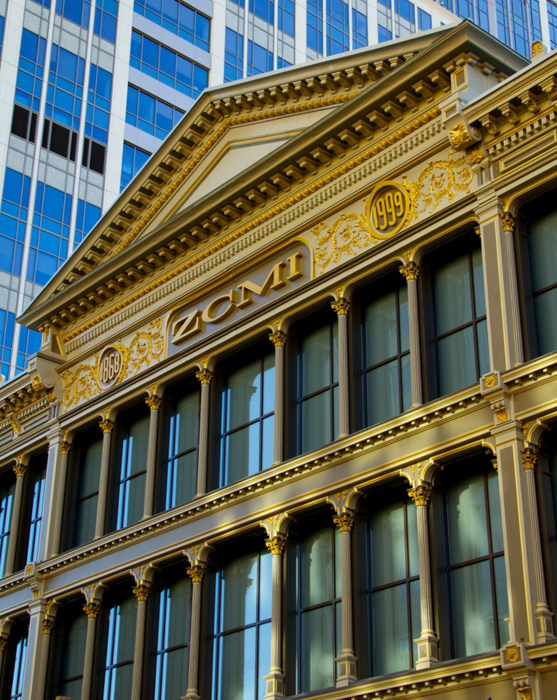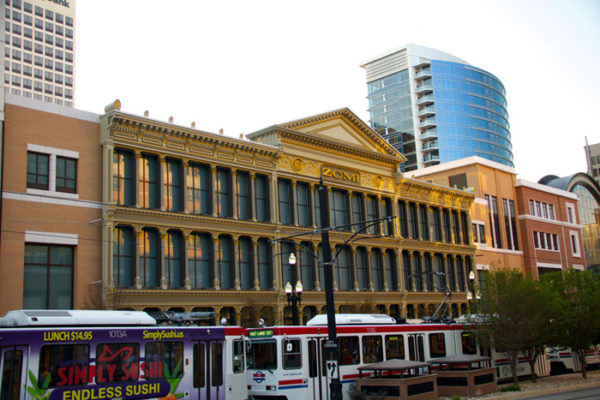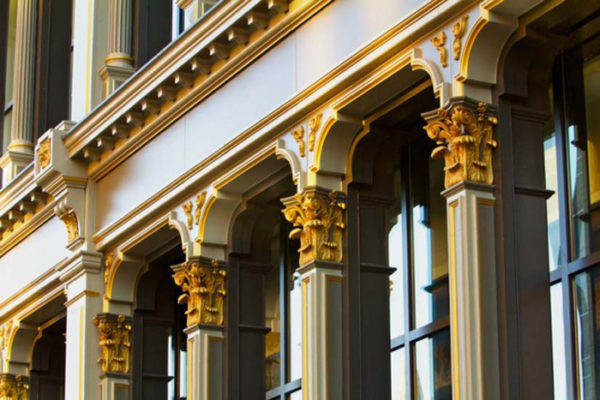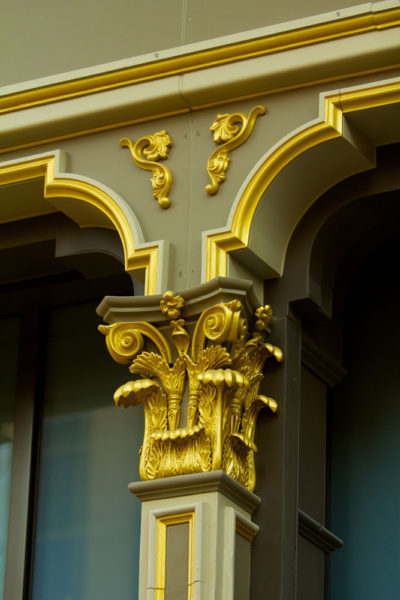Listed on the National Register of Historic Places, the Zion’s Cooperative Mercantile Institution (ZCMI) was founded by Brigham Young in 1868. The ZCMI façade restoration was a daunting project; it required special care to the various pieces of cast iron and sheet metal cornice section. To compliment the façade’s extensive preparation, provide the best protection from ultraviolet (UV) degradation and weathering, and provide the best possible aesthetic, the ZCMI restoration was completed using an array of Tnemec high-performance coating systems, including Tnemec’s Fluoronar coatings, which include Lumiflon fluoropolymer technology.
The original cast iron colonnades, ornamental castings and replacement pieces were prepared by abrasive blast cleaning and shop-primed with Tneme-Zinc and Hi-Build Epoxolines. Pitted cast iron pieces were reconditioned and also primed with the Tneme-Zinc urethane.
When preparing the cornice section, the sheet metal was found to be too thin for abrasive blast cleaning. The cornice was then prepared to SSPC-SP1 Solvent Cleaning standards by using a chemical stripper and pressure washing. This section was then primed with Epoxoline and finished with Tnemec’s Fluoronar coatings with Lumiflon FEVE fluoropolmer resins. Tnemec was able to provide various custom colors of Fluoronar, including a gold accent that simulates 24-karat gold leaf. The Fluoronar coated sections were then finished with a clear-coat that would enhance the finishes and extend the weathering qualities of the metallic coatings.
LUMIFLON, a product of the Asahi Glass Company, is a solvent-soluble fluoropolymer that offers distinctive advantages to architectural and industrial maintenance markets. LUMIFLON: provides architects and engineers with the option of using brighter colors and higher gloss, allowing gloss values as high as 90; offers the flexibility to be heat cured or cured at ambient temperature, giving fabricators a choice between shop application or application in the field; and can be used successfully on a number of substrates, including steel, aluminum, fiberglass, concrete and polycarbonate for 30 years or more without fading.
Images and information courtesy of Tnemec, Construction Specifier and Historical Arts & Casting.




Dear Sirs,
We are one of key applicators for various restoration project in Taiwan.
Our jobs are as followings:
To investigate the existing condition and coating inside and outside of a historic buildings.
To provide our proposal for a restoration project to an architect office for their design reference.
Our application jobs sequences started with cleaning and/or paint stripping for protective or decorative coatings. In some project, we might need to do damp proofing of masonry wall due to high underground water table and waterproofing of roofing. Taiwan has many colorful temples including gold color. In 2004,we worked for restoration of our National Guest House in Taipei. Gold leafs are used to decorate inside wall and ceiling etc.
We are interested in ordering the sample of your FEVE Coating Simulates Dazzling Gold Leaf or any other protective coating for using with restoration projects or contemporary new building in Taiwan.
We will ask one of courier services to pick up the samples from your office/warehouse and pay for the cost of the samples by a personal credit card if it’s acceptable to avoid paying banking charges at both ends just for a small amount.
Thank you for your attention and reply.
Sydney Tsai,
Megaway Corporation,
Taipei, Taiwan.